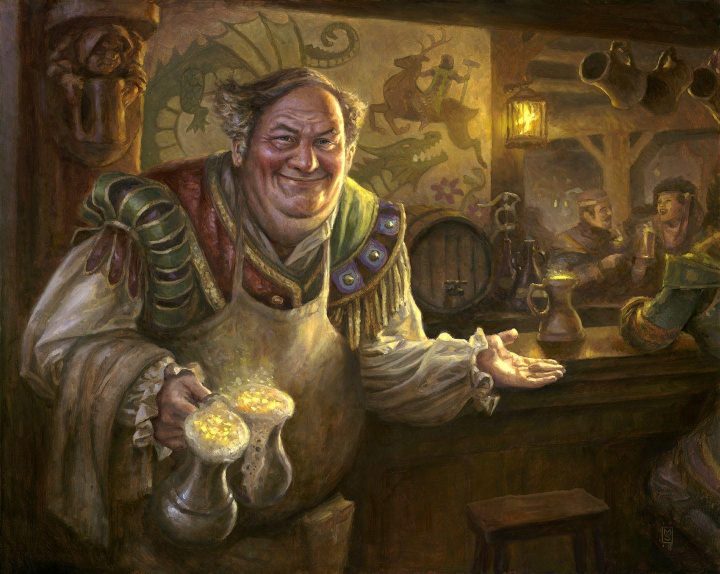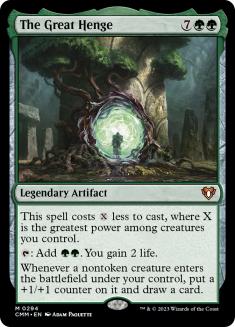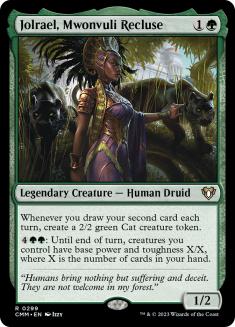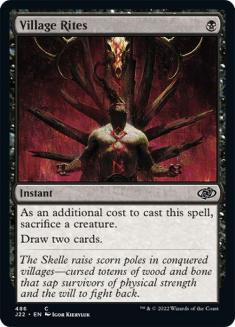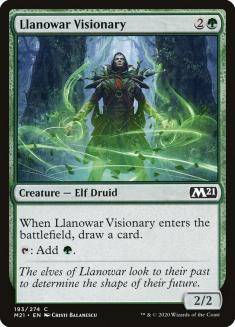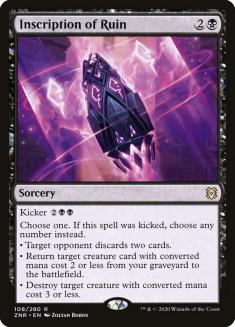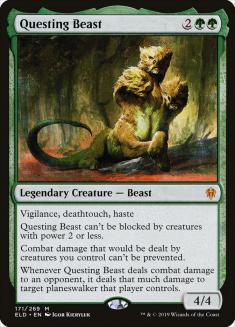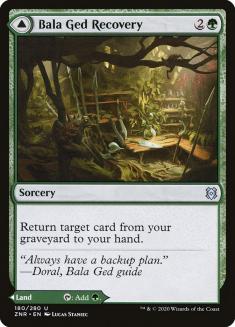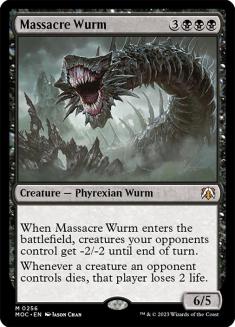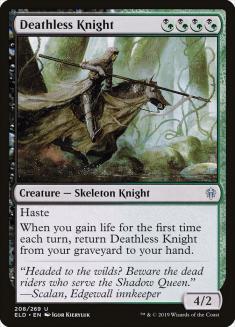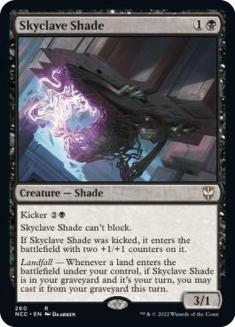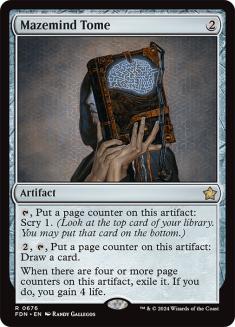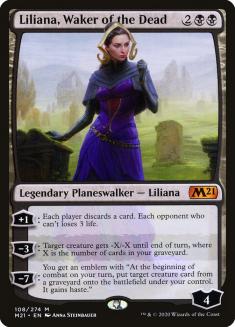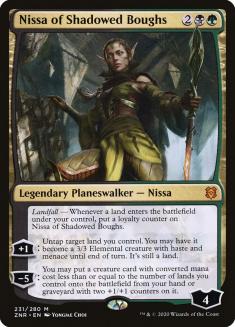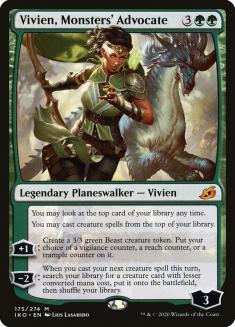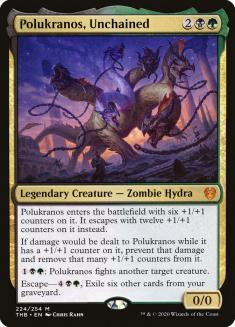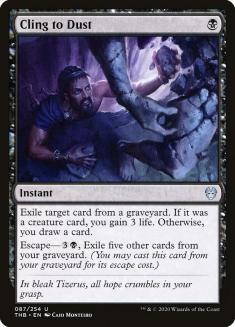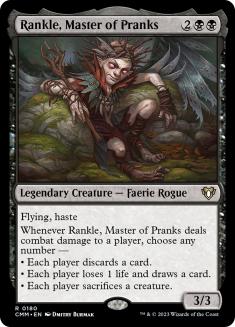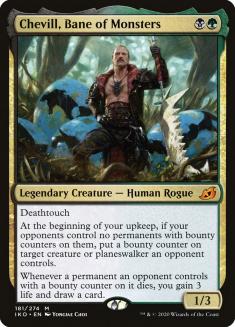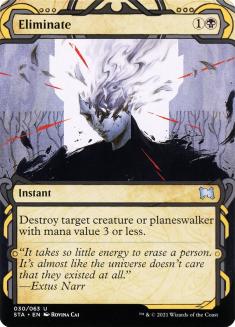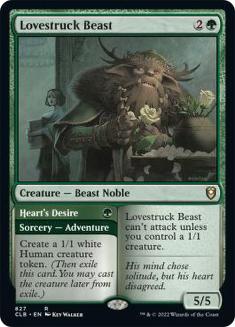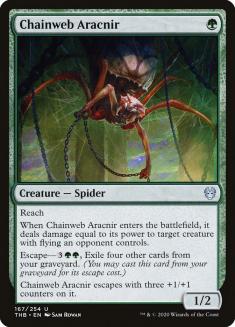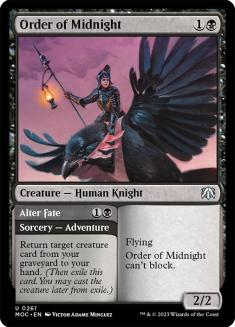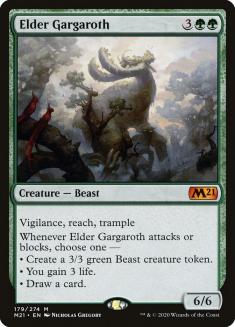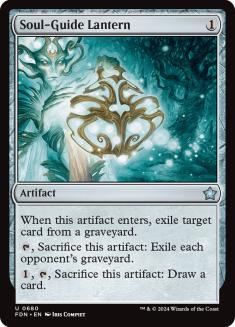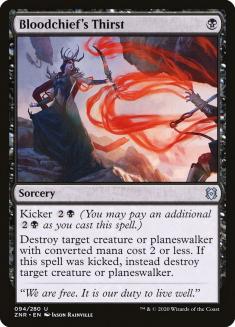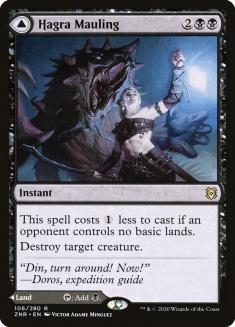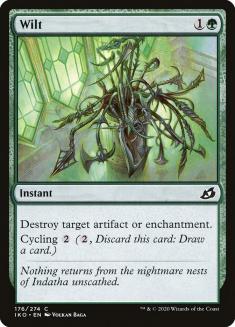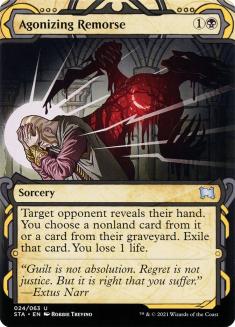After banning everything else, Temple of Malady is not only playable — it’s the best thing to be doing.
Edgewall Innkeeper can be frustrating to play against but something has to be the best. If it weren’t Innkeeper, it would be Embercleave, Lurrus of the Dream-Den, or something else. Thankfully, there are plenty of ways to interact with it, so I welcome our new midrange overlords.
Creatures (27)
- 4 Scavenging Ooze
- 3 Rankle, Master of Pranks
- 4 Foulmire Knight
- 1 Order of Midnight
- 4 Lovestruck Beast
- 3 Murderous Rider
- 4 Edgewall Innkeeper
- 4 Kazandu Mammoth
Lands (21)
Spells (12)

Golgari Adventures is a traditional midrange deck. It tries to pressure its opponents while disrupting them just enough to keep them off-balance. Black has the best removal in the format while green has the best threats and the best card advantage. Additionally, you have staying power thanks to the adventure creatures and Agadeem’s Awakening. The sideboard options are also solid. It’s basically the full package.
One of the main things that’s changed since the last time we saw Golgari Adventures is that The Great Henge is consistently easy to cast. Any deck that has Lovestruck Beast and Kazandu Mammoth could easily cast The Great Henge on Turn 4 (and probably should be trying to do so). Unless you had Rotting Regisaur, you really had to work to enable The Great Henge with consistency, which meant you’d often only play one or two copies. Now it’s a focal point and a very important secondary engine alongside Innkeeper.
Scavenging Ooze is another very important card for the archetype. Previously, Golgari was lacking a solid two-drop, so Ooze slots right in. It gives you some lifegain; insulates you against Kroxa, Titan of Death’s Hunger; and can grow large enough to be a solid enabler for The Great Henge.
I’ve played Epic Downfall in Golgari Adventures before, so it’s nice to have access to Bloodchief’s Thirst, Heartless Act, and Eliminate. You don’t need to kill everything, so having your removal be as cheap and efficient as possible ensures you can survive the early game. For the bigger stuff, you have Murderous Rider.
Kazandu Mammoth and the rest of the DFCs are also game-changers. Golgari Adventures struggles with its mana at times. The deck has a low mana curve but is still relatively mana hungry. Your average power level is on the low end, so flooding can be a death knell. There’s also a necessity to play Murderous Rider and other cheap black cards while requiring as many green sources as possible. Life can be difficult, especially if you don’t draw Temple of Malady. However, playing 29 potential mana sources fixes many of those issues.
Why is Golgari Adventures the best deck? It has some of the best answers, the best threats, and the best engines. It’s also an established and easily tuned already-existing deck, which means it’s further along in its progression than all the new decks that people are trying to build. It’s very good at picking apart weak strategies, which basically makes it the fun police. Maybe it won’t continue to be the strongest deck in the future but I haven’t seen anything to challenge it on that front at the moment.
My current list is simple, although there are far more interesting directions you can go.
For example, I tried a Jolrael and Village Rites package when Core Set 2021 was released and it was solid. Village Rites can trigger Jolrael, helps against opposing removal spells, and has a low opportunity cost with Lovestruck Beast in your deck providing you with random bodies to sacrifice. Rankle, Master of Pranks works well with Jolrael as another way to trigger her, which provides sacrificial fodder. The Jolrael engine was more cute than good, so I’d prefer to stick to the power of Scavenging Ooze and The Great Henge right now.
As a grindy card, Inscription of Ruin is solid, especially in the sideboard games where each card matters. Sadly, it’s slightly too slow for what we want but I wouldn’t be surprised if some people try it. I’ve strongly considered it for Golgari and it’s been in some of my other decks.
This deck is mana-intensive and lacking in strong two-drops, so Lotus Cobra should be a great fit, right? There’s a world where that’s true but Lotus Cobra has too many strikes against it to warrant inclusion. Its body isn’t entirely relevant and it doesn’t scale into the late-game. Maybe a different build of the deck can utilize Lotus Cobra better.
In a world with spot removal and big creatures, Questing Beast often trades down. I’ve played my fair share of games where the extra closing speed would be a welcome addition but we have Rankle, Master of Pranks for that. Similarly to Village Rites, Rankle makes great use of the extra bodies this deck can generate while also being a disruptive tool. Meanwhile, Questing Beast would simply trade in combat with something you’d otherwise want to ignore.
If not for being so slow and cumbersome, Bala Ged Recovery would be right at home in this sort of deck. Again, I could see versions that play it but this isn’t it.
The next few cards are mostly going to be sideboard options and Massacre Wurm is about as powerful a sideboard option as you can get. Unfortunately, there aren’t too many decks out there where it’s worth the six-mana investment. Its mana cost is also prohibitive but I look forward to the deck where I’m incentivized to make it work.
If you want a recursive threat against control decks (especially those with Doom Foretold), Skyclave Shade is probably your best bet and it doubles as a useful sideboard card against mill decks. Deathless Knight provides much of the same role but is more difficult to trigger, even with Scavenging Ooze in the mix. I’m comfortable with my control matchups but these are fine cards to turn to if you want some extra help.
With the bigger engines gone, it’s going to be Mazemind Tomes time to shine. Fortunately for green mages, they already have enough engines and various sources of card advantage that Mazemind Tome isn’t entirely necessary. You have no idea how much it saddens me to pass on Mazemind Tome in a midrange deck but green still has it all.
In lieu of a recursive threat or card advantage engine, you could look at planeswalkers to fight opposing midrange decks. Of these, Vivien seems like the best option because of how creature-centric the deck is but Liliana isn’t far behind. If these matchups were more popular or required more attention, I’d consider it.
Although Polukranos, Unchained has escape, I don’t particularly want it against Rogues. Granted, they have very few ways to remove it once it’s on the battlefield, but its escape cost is too prohibitive. I’ve seen several people maindeck Polukranos and sing its praises but I have yet to be impressed by the card. It does enable The Great Henge but a full turn behind our three-drops, so that argument won’t sway me either.
There are certainly matchups where Cling to Dust is going to shine more than Soul-Guide Lantern. Unfortunately, Rakdos Midrange is one of the most popular decks and you want the full graveyard clear against them more than the late-game value.
You can also splash but I wouldn’t advise it. Abzan has a Triome but very little that’s actually worth it. Mythos of Nethroi is very powerful but we’re already flooded on three-mana cards and way more incentivized to play Murderous Rider. If we truly need to remove an artifact such as The Great Henge, we can find a way.
Red offers Bonecrusher Giant but very little else. Since black is currently swimming in removal options and we already have plenty of adventures to trigger Edgewall Innkeeper, I don’t see a point to splashing Bonecrusher either.
Sideboarding
VS Golgari Adventures
Out:
In:
We sideboard light here but that might have to change. The problem is finding a plan that actually matters. Both players will typically have access to life, mana, and cards, so ideally you find a way to go over the top. That could include Garruk, Cursed Huntsman but I’m not sold on that plan because it won’t beat any active engine.
Rankle, Master of Pranks can be solid in some situations, mostly because it has flying. However, the games will often be about whether a player is able to stick Edgewall Innkeeper or The Great Henge and Rankle does very little in the face of those.
If they also have a bunch of The Great Henges, you’ll want the Wilt.
VS Dimir Rogues
Out:
In:
Against Mill Rogues, you are allowed to sideboard in more cards than you’re taking out. Obviously you run the risk of having too few lands, but with some of these decks, you’ll still have enough mana sources thanks to the DFCs. I was always looking forward to the first sideboard guide I could post that had me putting in eight cards and only cutting three and here we are.
In this matchup, it’s important to be as low to the ground as possible. Card advantage matters because you don’t want to fall behind but there will be some instances where Edgewall Innkeeper and The Great Henge are liabilities. Lovestruck Beast is probably your worst card but it’s important for enabling The Great Henge.
If they aren’t playing Ruin Crab, you don’t have to worry about their mill plan and present a reasonably sized 60 cards.
VS Mono-Red Aggro
Out:
In:
This matchup is straightforward. Control their battlefield, develop yours, and they usually won’t be able to break through your giant creatures. Watch out for Embercleave and you should be fine.
VS Rakdos Midrange
Out:
In:
You both have piles of removal but your late-game consists of drawing multiple cards while they try to kill you with Kroxa. If both players are able to do their thing, you overpower them quite easily. Still, the games are intricate and pretty fun which is exactly what Magic should be.
Duress can be solid in this matchup, especially if they’re playing fewer Mire Tritons and more Liliana, Waker of the Deads. They’ll usually have six to eight DFCs, so you can go after their mana if you want.
VS Esper Doom Foretold
Out:
In:
These matchups can be difficult because of how well set up they are to go over the top of you. Shatter the Sky sweeps up your puny creatures and Doom Foretold and their spot removal can grind you into oblivion. That said, between your discard and sheer amount of engines, you can outdraw them.
Overall, I’m sideboarding in Chevill, Bane of Monsters quite a bit and taking out Rankle, Master of Pranks about the same amount, but these aren’t the only decks in Zendikar Rising Standard. Chevill tends to get stronger post-sideboard with more cheap removal and with decks slimming down. It’s also another must-remove threat and potentially another engine for grindier matchups.
On the other hand, Rankle tends to get worse after sideboarding because our opponents will get cheap answers. Even if there was something else in that slot, such as Questing Beast, it would probably have the same treatment.
There’s no other deck I’d recommend for this weekend. Golgari Adventures is a safe choice because it has game against everything but it’s also doing some of the most broken things that remain legal in Zendikar Rising Standard. You won’t be disappointed.

